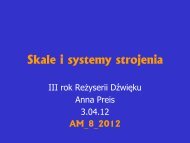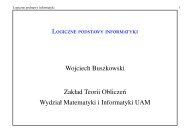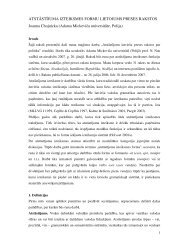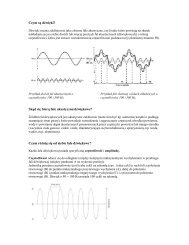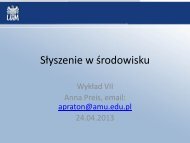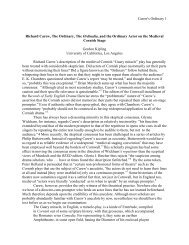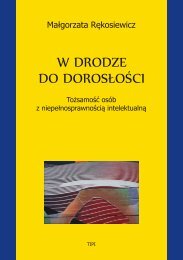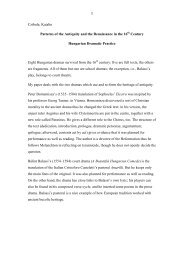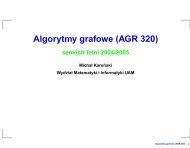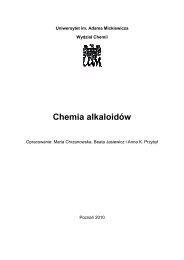Amir Weiner Getting to Know You
Amir Weiner Getting to Know You
Amir Weiner Getting to Know You
You also want an ePaper? Increase the reach of your titles
YUMPU automatically turns print PDFs into web optimized ePapers that Google loves.
GETTING TO KNOW YOU 29<br />
Triumph and Weakness<br />
The postwar quest for justice and revenge added new channels of gathering<br />
information. The imperatives of compiling propaganda material for use in<br />
the international arena, acquiring knowledge about its society’s conduct<br />
in war, and constructing official mythologies of the unprecedented cataclysm<br />
propelled the regime <strong>to</strong> create multiple investigative commissions that<br />
brought on board hundreds of thousands of new informants whose own<br />
agenda overlapped with the regime’s, even if partially and temporarily. The<br />
best known of these commissions was the “Extraordinary State Commission<br />
for the Establishment and Investigation of the Crimes of the Fascist German<br />
Invaders and Their Accomplices, and of the Damages They Caused <strong>to</strong> Citizens,<br />
Collective Farms, Public Organizations, State Enterprises, and Institutions in<br />
the USSR.” Established in November 1942, the commission employed about<br />
32,000 public representatives in charge of ascertaining the facts of Nazi crimes.<br />
More than 7 million citizens collected and prepared documents and, in turn,<br />
produced more than 54,000 statements and 250,000 pro<strong>to</strong>cols of witness<br />
interrogations and declarations, as well as approximately 4 million documents<br />
on damage caused by the Nazis. In the Latvian Republic, some 53,578 people<br />
<strong>to</strong>ok part in the commission’s work, of which 25,335 were paid employees and<br />
the rest volunteers or members of the Party and the Komsomol. In the western<br />
Ukrainian region of Volyn´ alone, evidence was gathered by more than 6,000<br />
people, not counting the investiga<strong>to</strong>rs and technical workers. Significantly,<br />
the 1,329 departmental commissions in the region included 891 rural soviets,<br />
traditionally a challenging site for Soviet power. 78<br />
The security services’ control over the information gathered by the<br />
commission was established early on by specific decrees. On the ground,<br />
scores of local commissions in the localities that consisted of local party and<br />
state bosses, Red Army officers, and selected representatives of the public<br />
(journalists, artists, doc<strong>to</strong>rs, and members of the local clergy) were guided and<br />
controlled by NKVD–KGB branches. Whatever the deficiencies embedded<br />
in the way the commission gathered its information—mainly a witch-hunt<br />
atmosphere and personal vendettas—they were outweighed by the immediacy<br />
78 Marina Sorokina, “People and Procedures: Toward a His<strong>to</strong>ry of the Investigation of Nazi<br />
Crimes in the USSR,” Kritika 6, 4 (2005): 801; Juliette Denis, “La Commission républicaine<br />
extraordinaire en Let<strong>to</strong>nie (1944–1945): Support de la refondation du régime soviétique,”<br />
in Vremia “veselogo soldata”: Tsennosti poslevoennogo obshchestva i ikh osmyslenie v sovremennoi<br />
Rossii (Perm´: Astaf´evskie chteniia, 2008), 215; Marian R. Sanders, “Extraordinary Crimes in<br />
Ukraine: An Examination of Evidence Collection by the Extraordinary State Commission of<br />
the U.S.S.R., 1943–1946” (Ph.D. diss., The Ohio State University, 1995), 84; GARF f. 7021,<br />
op. 55, d. 364, ll. 7–8.



